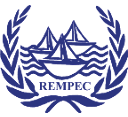6.1-01
TOXIC LIQUIDS, INCLUDING SUBSTANCES WHICH MAY LIQUEFY DURING TRANSPORT, FLAMMABLE, FLASHPOINT 61°C Closed Cup OR BELOW
Emergency procedures
Action
Avoid all sources of ignition (e.g. naked lights, unprotected light bulbs, electric handtools).
Turn ship off-wind.
Spillage on deck
Collect spillage, where practicable, using absorbent material for safe disposal. Wash remainder overboard with copious quantities of water.
Spillage under deck
Provide adequate ventilation. Collect spillage, where practicable, using absorbent material, for safe disposal.
Fire on deck
Use water spray. Do NOT use water jet. If possible remove receptacles likely to be involved or keep them cool with copious quantities of water.
Fire under deck
Batten down; use ship's fixed fire-fighting installation. Otherwise adopt action as for "On deck".
Special equipment to be carried
Protective clothing (gloves, boots, coveralls, headgear).
Self-contained breathing apparatus.
Spray nozzles.
Remarks by UN no.
HYDROGEN CYANIDE, stabilized, containing less than 3% water (UN No. 1051).
Spillage may be gaseous.
NICKEL CARBONYL (UN No. 1259)
Possible self-ignition at high ambient temperatures.
CHLORODINITROBENZENES, LIQUID or SOLID (UN No. 1577)
DINITROBENZENES, LIQUID (UN No. 1597)
DINITROTOLUENES, MOLTEN (UN No. 1600)
In fire, explosion hazard.
HYDROGEN CYANIDE, STABILIZED, containing less than 3% water and
absorbed in a porous inert material.
Spillage may be gaseous.
IRON PENTACARBONYL (UN No. 1994)
Possible self-ignition at high ambient temperatures.
DINITROTOLUENES, LIQUID (UN No. 2038)
In fire, explosion hazard.
TRIMETHYLACETYL CHLORIDE (UN No. 2438)
Water-reactive; use water from as far away as practicable.

